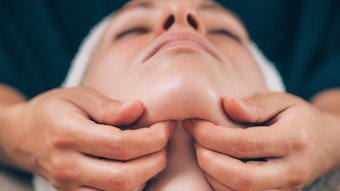
Increased signs of aging in skin may be linked to decreased dynein levels and decreased autogaphy activity, according to a team of research scientists from the Avon Skincare Institute (ASI). The team consisted of: John Lyga, Ph.D., director of skin bioscience; and Uma Santhanam, Ph.D., director of cell biology and clinical efficacy, who presented their research at the American Academy of Dermatology's Summer Conference in their posters: “Dynein is necessary for intracellular transport of both nutrients and autophagosomes in human dermal fibroblasts," and “A role for autophagy in skin aging.”
The Necessity of Dynein
To help answer the question of why skin develops lines and wrinkles and loses firmness with age, the team of researchers started with focusing on dynein, a key transporter in nutrients and mitochondria—the ‘powerhouses’ within cells—for skin cell production and proper functioning.
The scientists discovered that with age, dynein levels decline and a deficiency can cause an impairment of nutrients, which then increases aging on the skin’s surface.
Autogaphy’s Role in Aging
The Avon scientists’ other focus—which is heavily researched in the medical field—was on autogaphy, a pathway by which cells remove and recycle damaged components. The scientists also discovered this activity declines with age and UV exposure.
With dynein contributing to the recycling process, the decrease adds to waste disposal. Additionally, scientists found controlling the recycling pathway declines the production of collagen. With a reduction of nutrient transport and cellular recycling contributing to the sub-optimal functioning of skin cells, results lead to aging with wrinkles, lines and loss of firmness.










